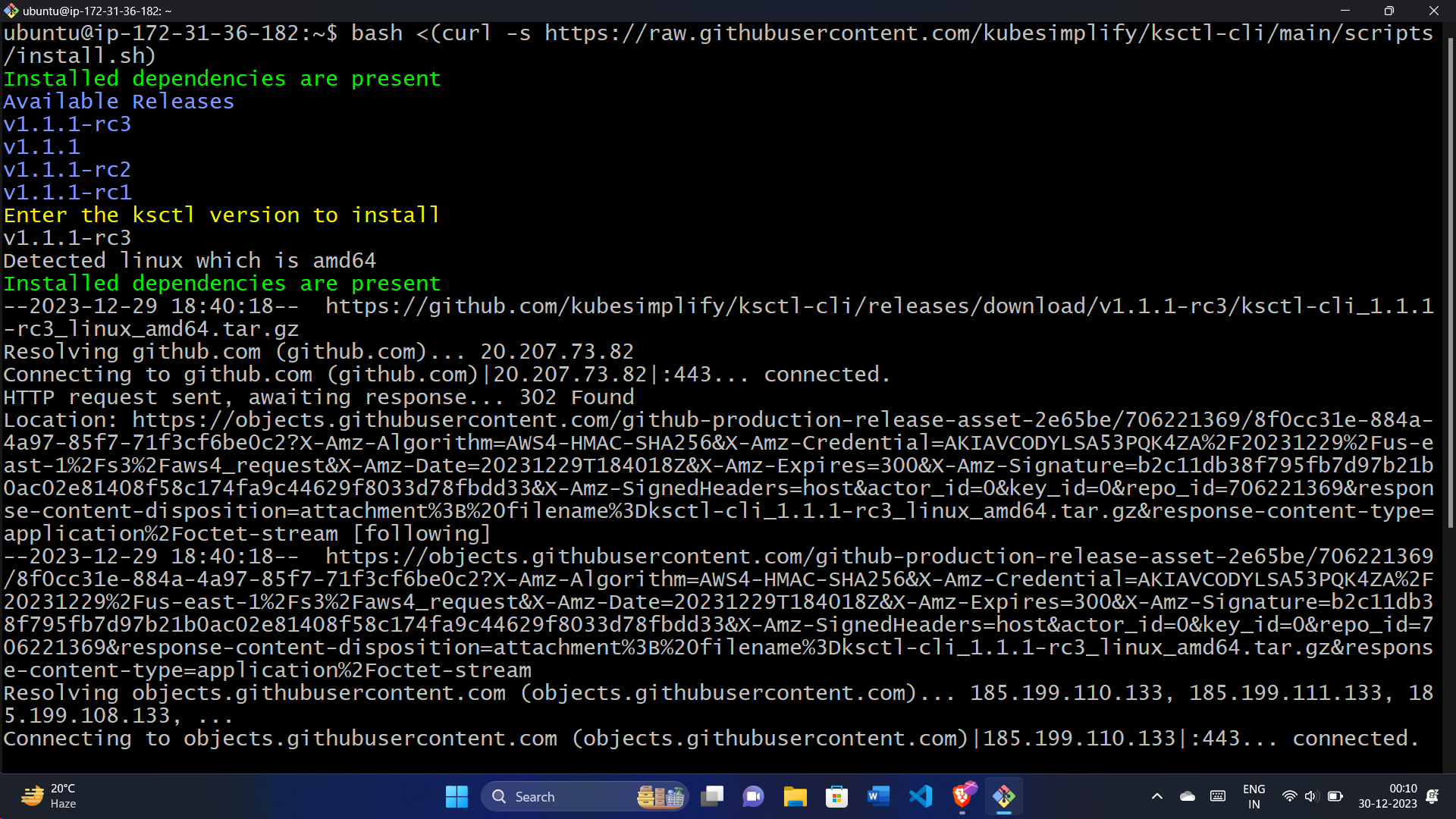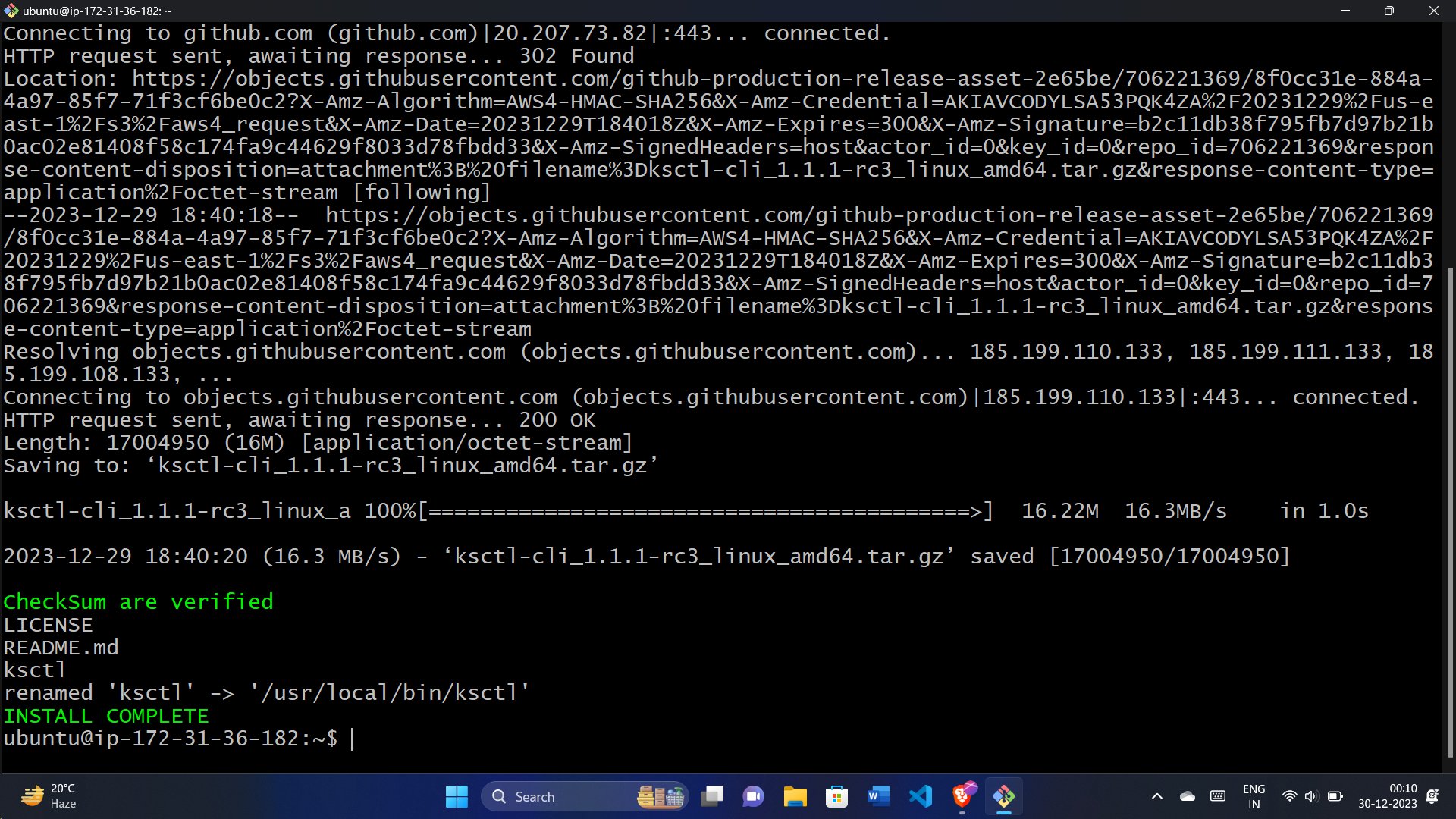Ksctl: Making Kubernetes Easy Across Clouds
 Shaik Ahmad Nawaz
Shaik Ahmad Nawaz
In the complex world of managing Kubernetes, a tool like Ksctl emerges as a game-changer. Ksctl, short for Kubernetes Simplify Control, is a tool designed to simplify how we handle Kubernetes clusters, especially across different cloud services. This blog will walk you through what Ksctl is, the problems it tackles, its standout features, and a step-by-step guide on creating clusters effortlessly.
What is Ksctl?
Ksctl is a handy tool that makes managing Kubernetes clusters easier. It's like a one-stop-shop for dealing with Kubernetes across various cloud services. Created by the Kubesimplify team, Ksctl is all about simplifying the future of Kubernetes management.
Problems Ksctl Solves:
Before Ksctl, using Kubernetes posed some challenges:
Too Many Tools: People were using too many different tools, causing confusion.
Tool Complications: Some tools relied on others, making things complicated.
No Consistency: The Kubernetes world lacked consistency, making it hard for things to work together smoothly.
Tricky Configurations: Creating custom setups and managing applications had its share of difficulties.
Hard to Learn: Managing Kubernetes, especially for special cases, was tough to learn.
Solution: Meet Ksctl
Ksctl tackles these issues with some cool features:
1. Manage Anywhere:
Ksctl lets you manage your Kubernetes clusters across different cloud services without switching tools. It's like having a universal remote for your clusters.
2. Pick Your Cluster Flavor:
Choose between having someone else manage your cluster or doing it yourself. Ksctl gives you options for High Availability (HA) clusters, making it flexible.
3. Easy App Deployments:
Ksctl makes deploying applications a breeze by having the necessary plugins ready to go. It's like having your favorite apps pre-installed on your new phone. (Currently a beta feature)
4. Light and Simple:
Ksctl is lightweight, meaning it won't slow you down. You can install it quickly without needing extra stuff.
5. Your Way:
From managing everything to having Ksctl handle it, and from deciding which plugins to use to choosing pre-installed apps, Ksctl lets you do things your way.
Key Features:
Easy Cluster Setup: Make a new cluster with just one simple command.
No Fuss Installation: Installing Ksctl is a breeze – no complicated steps.
Make it Yours: Customize your cluster based on what you need, from configurations to apps.
Faster Creation & small binary size: It creates clusters in ~5-6 minutes and the ksctl CLI binary is <50 MB.
How to Use Ksctl:
Creating a cluster with Ksctl is easy:
Install Ksctl: Follow the easy steps to get Ksctl CLI on your system.
For Linux:
bash <(curl -s https://raw.githubusercontent.com/kubesimplify/ksctl-cli/main/scripts/install.sh)
For MacOS:
zsh <(curl -s https://raw.githubusercontent.com/kubesimplify/ksctl-cli/main/scripts/install.sh)
For Windows:
iwr -useb https://raw.githubusercontent.com/kubesimplify/ksctl-cli/main/install.ps1 | iex


Whats next:
Github Repo to look for
kubesimplify/ksctl: Cloud Agnostic Kubernetes Management (Core)
kubesimplify/ksctl-cli: Cloud Agnostic Kubernetes Management (CLI)
kubesimplify/ksctl-docs: Cloud Agnostic Kubernetes Management (Docs)
Conclusion:
Ksctl is your go-to tool for managing Kubernetes without the headache. As more folks dive into Kubernetes, tools like Ksctl make things simpler. With its focus on working across different clouds, offering cluster choices, and making app deployments hassle-free, Ksctl stands out. Embrace the future of Kubernetes management with Ksctl, and make your cluster adventures smoother than ever.
In the future more blogs will come regarding its usage. so stay tuned
For more details and updates, head over to kubesimplify's home on GitHub. And if you want to join the conversation or report an issue. Happy clustering!
Subscribe to my newsletter
Read articles from Shaik Ahmad Nawaz directly inside your inbox. Subscribe to the newsletter, and don't miss out.
Written by

Shaik Ahmad Nawaz
Shaik Ahmad Nawaz
Full Stack Developer, Cloud Enthusiast ☁️